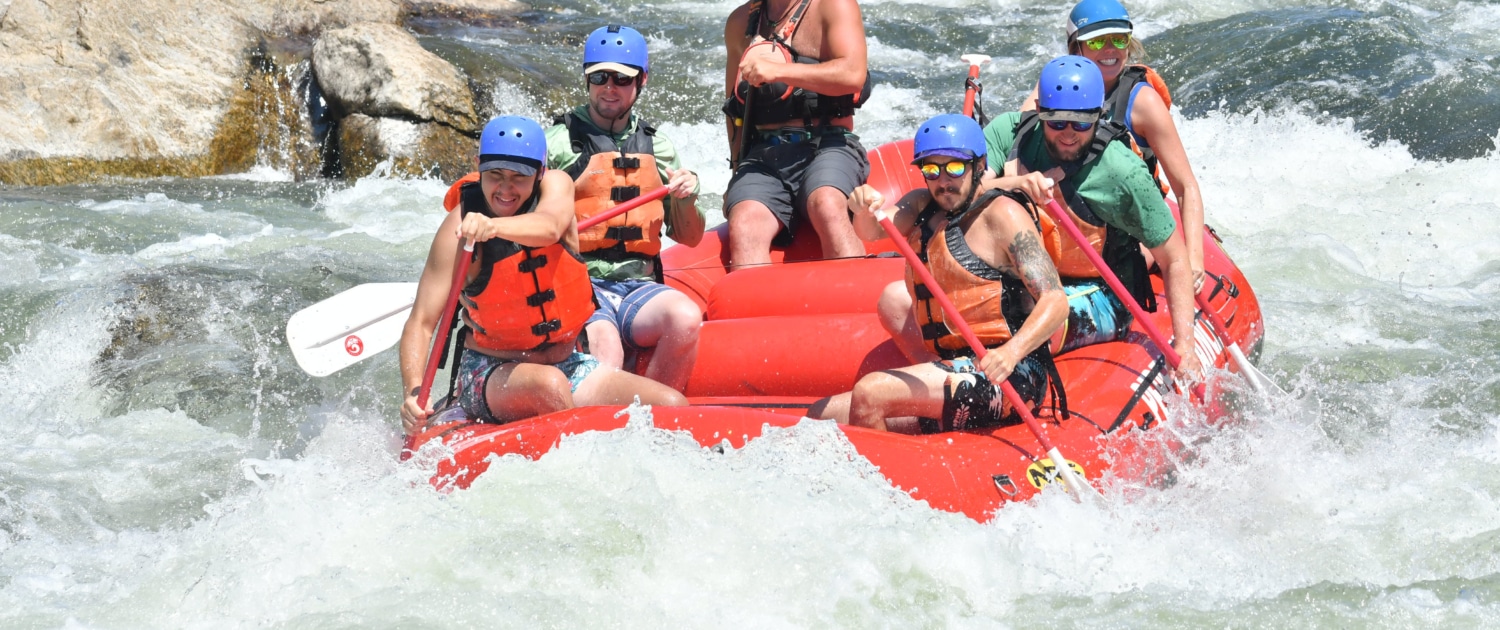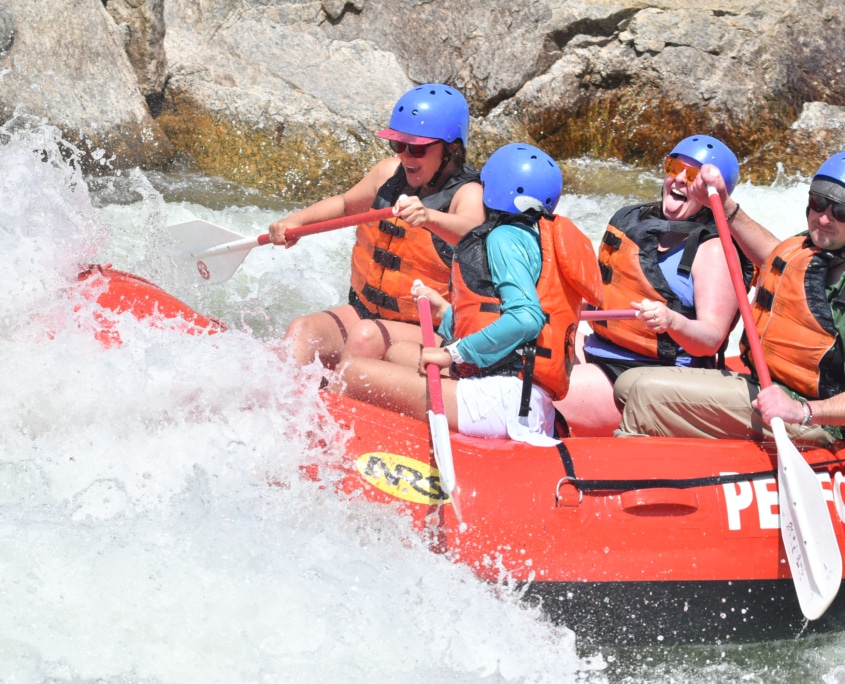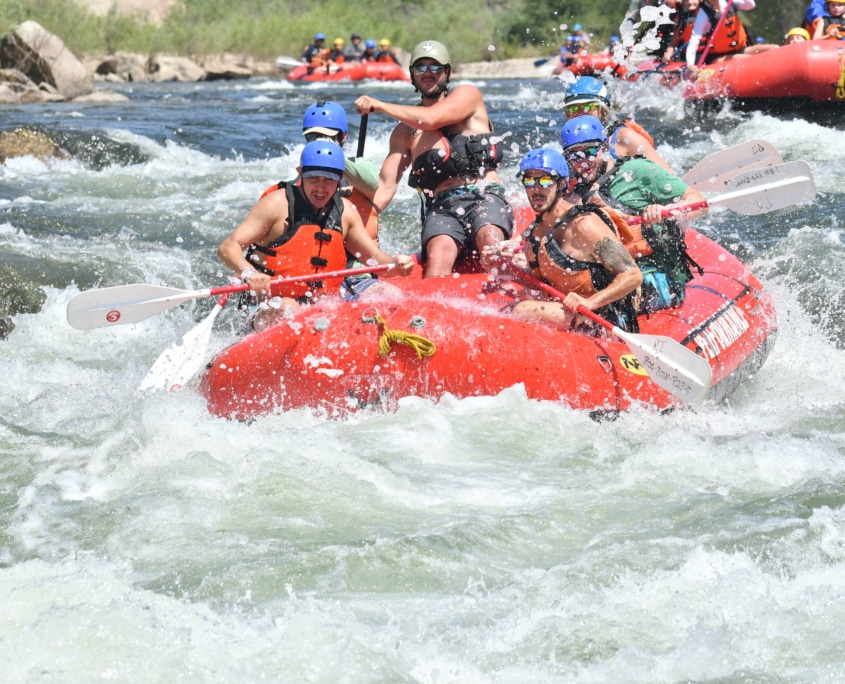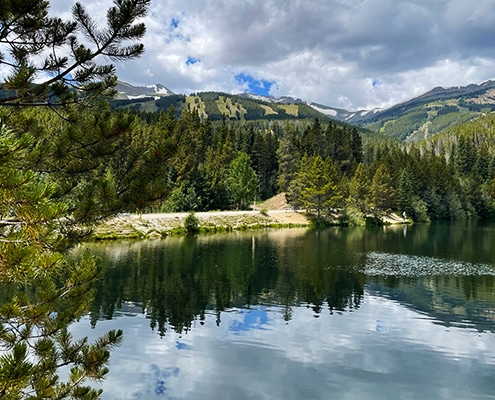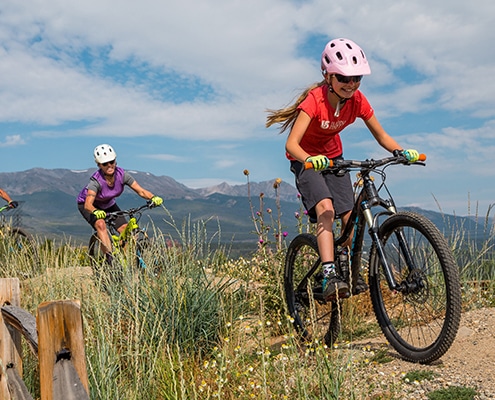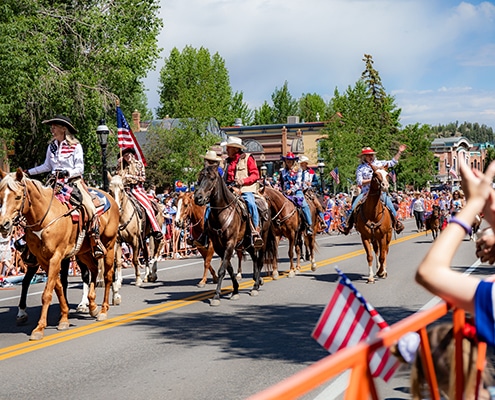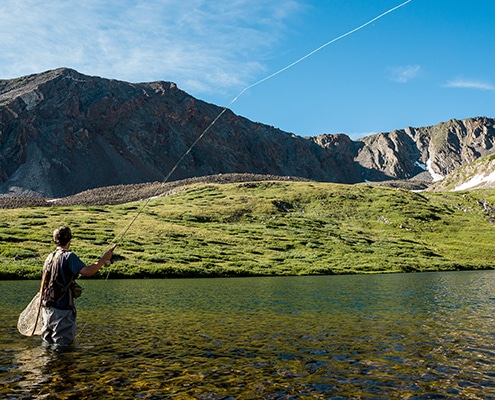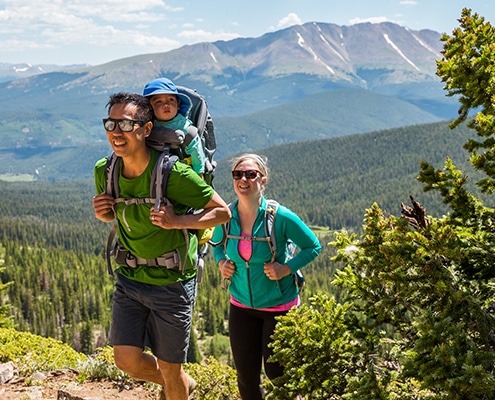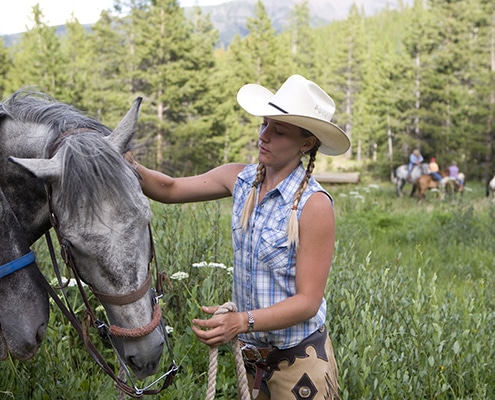The Basics
WHAT TO EXPECT
Your group will meet at the rafting company to gear up! There will be changing areas for you to suit up. The company will provide neoprene wet suits, PFDs (life jackets), helmets, splash jackets, and booties. After gearing up, you will load up on a bus and head to the put-in spot. Here, your knowledgeable guides will teach you the basics of paddling and go over safety protocols. Your group will carry your raft to the water, depending on the location, and load up! After an incredible time on the river, boats will be loaded up and you’ll be bussed back to the company location. From there, you’ll have the opportunity to purchase photos or souvenirs, and thank your guide for a fun day.
WHAT TO BRING
- Comfortable, quick-drying clothing (swimsuit, shorts)
- Protective footwear (water shoes, sneakers that can get wet, Chacos/Tevas)
- Sunglasses, hat, sunscreen
- Dry change of clothes for after the trip
- Gratuity for your guide!
Rafting Outfitters
Check out these expert guiding services in our area! Give concierge a call for additional owner discounts.
Performance Tours
AVA Rafting
KODI Rafting
Colorado Rafting Company
The Adventure Company
Sage Outdoor Adventures
FAQs
Everything you need to know as you plan your whitewater adventure!
Where can I go rafting?
There are many destinations in Colorado where you can go rafting on a commercial trip! Here are some of the most popular trips in our area:
- Blue River- closest to Breckenridge!
- Brown’s Canyon- near Buena Vista
- Royal Gorge- between Pueblo and Salida
- Clear Creek Canyon- near Idaho Springs
- Eagle River- near Vail
- Glenwood Canyon
- Colorado River- near Kremmling
Do I need to book a reservation?
Yes! Rafting is a very popular activity in the summer. It is highly recommended that you book your rafting adventure in advance to ensure you have a spot. Typically, outfitters will require a deposit at the time of booking.
Can I fall out? What if I can’t swim?
It is possible that you could fall out of the raft while on your adventure. Your chances of falling out are greatly reduced by following the instructions of your guide. Be sure to pay close attention during your pre-trip safety talk to know what to do in case of a swim. Non-swimmers are allowed on many trips. PFDs (lifejackets) are mandatory on all trips. If you are concerned about your ability to swim, choose a trip with a lower class rating and contact your outfitter for advice.
Is rafting a good activity for kids?
Yes! Rafting is a fun activity for the whole family. For younger children (4+), it is recommended to choose a trip with a class I or II rating. Older children (7+) will have a blast on the moderate class III-IV trips along with their parents! For challenging trips with a class IV or V rating, children should be over 16. If you have questions or concerns, just ask your outfitter when booking!
When is the best time to go rafting?
Once snow starts melting, the rivers start filling up! The rafting season runs from late April to mid-September. Water levels are highest in the spring and early summer (May-June), and gradually decrease throughout the course of the summer.
Do I have to paddle?
Depending on your outfitter, you can choose between paddle boats where everyone aboard paddles, oar boats where the guide solely navigates the raft, and paddle assist in which the guide rows and the crew paddles intermittently. If you cannot paddle or do not wish to, choose an oar boat trip for your day on the river.
Can I bring my dog?
No, you cannot bring your dog whitewater rafting. Rafting can be dangerous- bringing your dog would create a potentially dangerous situation for your pet and for the other passengers aboard your raft. Service dogs are allowed on some scenic trips; contact your outfitter for information and their policies.
What do the class ratings mean?
The whitewater classifications determine the difficulty of navigating a stretch of river based on hazards, water levels, and CFS. Here are the whitewater class ratings:
- Class I: Easy rapids with small waves; suitable for beginners.
- Class II: Slightly more challenging; straightforward rapids with some maneuvering required.
- Class III: Intermediate level; rapids with moderate, irregular waves and potential obstacles.
- Class IV: Advanced; powerful, turbulent rapids requiring precise navigation and skill.
- Class V: Expert level; extremely difficult rapids with high risk and demanding technical skills.
- Class VI: Unrunnable; considered too dangerous for any commercial rafting.
Should I tip my guide?
Tipping is customary on guided rafting trips.

